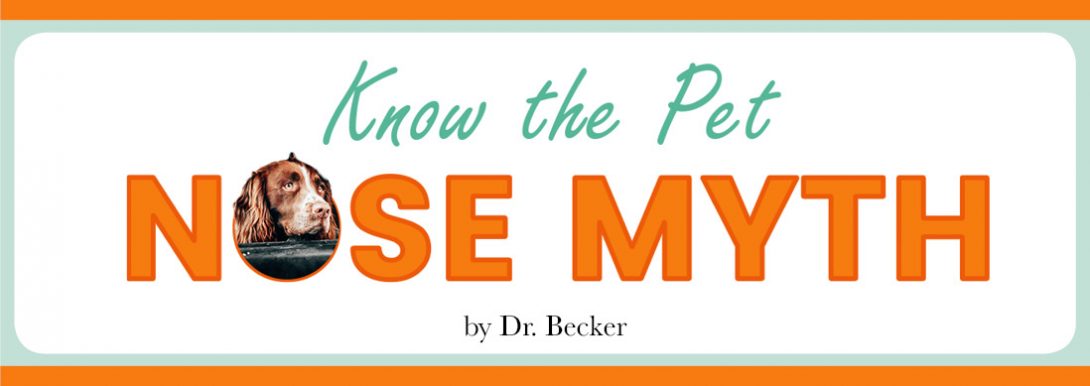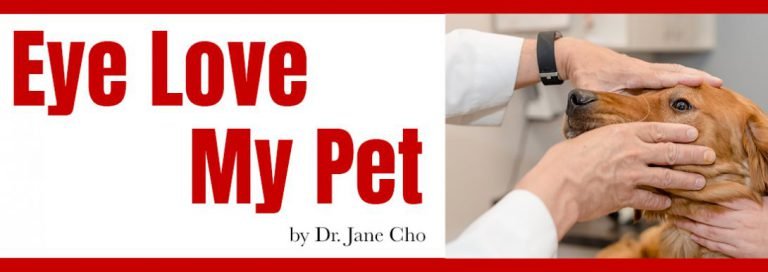Most pet parents have been told that if their pet’s nose is warm or dry, it means they’re sick. Actually, that’s a myth. A warm dry nose by itself doesn’t mean that your pet has a fever or is sick. Dog and cat noses go from moist and cool to warm and dry and back again quite easily, and it’s perfectly normal and healthy.
However, if your pet has symptoms of an illness, such as vomiting, diarrhea, loss of appetite or lethargy, then the warm, dry nose is probably an additional symptom of an underlying condition. What you definitely want to watch out for and what may warrant a trip to your veterinarian are changes in the texture of your pet’s nose, for example:
- if it becomes flaky or crusty
- if the color changes
- if the nose is not only dry but the skin is cracking
- if it’s losing pigmentation (getting lighter in color)
- if you can see scabs, sores, non-healing cracks, fissures, or other types of skin irritation.
Why Pet’s Nose Changes Color?
The color of a dog or cat’s nose is determined by genetics and can be black, pink (which some breeders call a “Dudley nose”), liver-colored or the same color as the coat. Some pets have a very normal and natural condition called either “snow nose” or “winter nose,” which means their nose color fades during the colder months and returns to its normal darker color when the weather warms up.
Certain dog breeds have noses that go from black to brown or pink as they get older. This is thought to be a result of the breakdown of tyrosinase, which is an enzyme that produces pigment. Since tyrosinase is a temperature-sensitive enzyme that works more efficiently in warmer weather, this could also explain the winter nose color some dogs get when the weather gets cold.
Some pets, including many calico cats, develop black spots on the nose and lips as they age. This is a totally normal and harmless change called lentigo simplex. It’s simply a pigmentation change that occurs as part of the normal aging process. Sometimes an animal’s nose will lighten up when he’s sick and return to its normal darker color once he’s back in good health. If there’s a scrape or abrasion on your pet’s nose, it can turn pink as it heals then darken up as the scab falls away
Contact dermatitis can also cause your dog or cat to lose pigment on the nose. Some pets are sensitive to plastic food and water bowls, and continued exposure can cause the nose to lighten in color.
Sometimes the lips will also become red and irritated. That’s one of the reasons I recommend stainless steel food and water bowls because aside from the potential for plastic hypersensitivities, plastics wear down over time, and toxins can leach into your pet’s food and water.
Finally, there’s an immune-mediated skin disease called vitiligo that can turn your pet’s nose pink, but there are usually other signs of the disorder occurring at the same time, such as random white hairs or entire patches of white hair on your pet’s body. With vitiligo, the immune system attacks the pigment-containing cells of the body that are responsible for color. There are certain breeds that are more prone to the condition, including Dobermans, German Shepherds, Rottweilers and Dachshunds.

If your pet’s nose is pink or has turned pink, you’ll need to protect it from sunburn, which is a very real concern during the summer months as well as on sunny winter days. You’ll want to apply a non-toxic, safe sunscreen before your pet goes outside.
When to Seek Veterinary Care for Pets?
If you notice nasal discharge, swelling, or an unpleasant odor from your dog’s nose or the area around it, or if she seems to be having trouble breathing or is making abnormal respiratory sounds, you should make an appointment with your veterinarian. These symptoms may indicate there’s something going on inside the nose, such as the presence of a foreign body, an infection or even a nasal tumor, which is actually more common than you might think.
Other signs of nasal issues include sneezing, pawing at the nose, nosebleeds, noisy breathing, or a visible bulge or a lump on either side of your pet’s nose or face, which is sometimes caused by a tooth root abscess.
Diseases Associated With Pet’s Nose
There are several medical conditions that can effect your pet’s nose.
- Pemphigus Complex is a group of serious autoimmune skin diseases that affects both dogs and cats. There are two main types of pemphigus: pemphigus foliaceus and pemphigus erythematosus. Both start with patches of red skin on the face, including the nose and ears. The foliaceus variety often spreads to other parts of the body, including the feet, central body, core and paws.
Pemphigus erythematosus involves only the face, head and footpads. The red patches quickly turn into blisters, and then pustules that can become crusty and cause the hair to stick to them and eventually fall out. Areas of skin depigmentation are also seen with both these types of pemphigus.
There is a third type of pemphigus called pemphigus vulgaris, which is rare. Blisters and ulcers can form on the lips, nostrils and eyelids, and can also involve the nail beds, which can cause the nails to fall out.
- Discoid Lupus Erythematosus is another autoimmune disease that occurs in dogs, but not in cats. It’s most common in certain breeds, including Collies, German Shepherds, Huskies, Shetland Sheepdogs and Brittany Spaniels. It is thought to be a milder version of the systemic form of lupus, and is limited to the face. First, the nose loses pigmentation, and then often it develops cracks and sores, non-healing fissures, and crusting.
- Zinc-Responsive Dermatosis is another type of nose disorder. It’s caused by a zinc deficiency and is prevalent in Huskies, Doberman Pinschers, Great Danes and Alaskan Malamutes. Dogs with this condition have thin hair and often a scaly rash on the face around the nose, eyes and mouth, and even in the ears. Crusting can also appear on the elbows and hocks in some of dogs. These areas can become quite callused and crack easily.
It’s important to make sure your dog has a confirmed case of zinc-responsive dermatosis before supplementing with zinc. This isn’t a common condition, and zinc toxicosis can develop when someone assumes their dog has the disorder and begins supplementing without a blood test to confirm blood levels of zinc are abnormally low.
Every dog I’ve seen with zinc-responsive dermatosis has been fed an unbalanced homemade diet. The likelihood that your dog has a zinc deficiency is very low unless you, too, are feeding an unbalanced homemade diet. Other nutritional deficiencies can also cause changes in nose tissue, especially omega-3 fatty acid deficiency, which is very common and can cause the nose tissue to become thickened and dry.

Nasal Solar Dermatitis (“Collie Nose”) is a condition most often seen in areas of the U.S. that get a lot of sunshine. It primarily affects herding breeds, including Collies, Aussies and Shelties. With exposure to sunlight, the skin between the nose and muzzle first becomes quite irritated looking, then the hair falls out, then the skin begins to ooze and crust over.
With repeated sun exposure, the skin actually breaks down. In serious cases, the nose can become a big non-healing wound that’s incredibly painful for the dog, and increases the risk of skin cancer. If you have one of these breeds and his nose is scabby, don’t ignore it.
There are other systemic conditions that can affect the health of your dog’s nose. The most common is hypothyroidism, which leads to a thickening of the skin of the nose and a leathery appearance.
Caring for Your Pet’s Nose
Your pet nose knows everything. Hence, get acquainted with the normal, healthy look and shape of your dog’s nose so you can immediately identify any change that occurs. Keep an eye out for any unusual signs like nasal discharge, and also stay alert for excessive dryness, crusting or loss of pigmentation.
I also recommend you watch the nose as your pet breathes. Dogs and cats are nose breathers when at rest — their mouths are typically closed. If your pet’s nostrils flare more than normal, it could be she’s having some trouble breathing. If you notice anything unusual about your pet’s nose, especially if there are other signs of illness, it’s time to make an appointment with your veterinarian.
In my experience, topical ointments applied to a dog’s or a cat’s nose are often useless, because they get licked off within seconds. The only thing I recommend you apply to your pet’s nose while you’re waiting for your vet appointment is natural vitamin E or coconut oil. You can open a vitamin E capsule, squeeze out the contents, and apply it or a dab of coconut oil to your pet’s nose until you can be seen by your veterinarian.
Mercola, J. “Your Pet’s Nose Is a Barometer of Health (Don’t Fall for This Myth)” Retrieved April 15, 2018.





